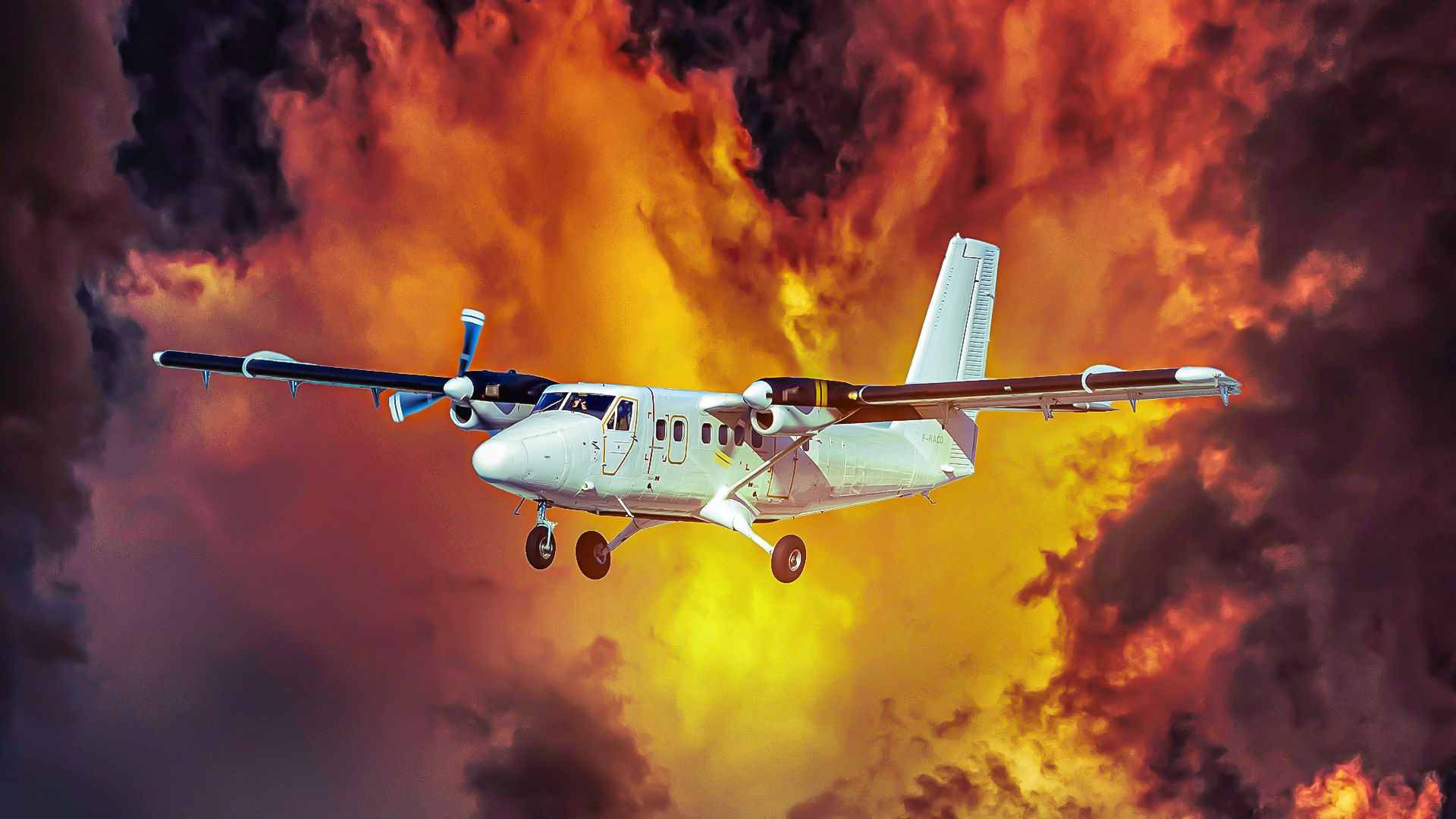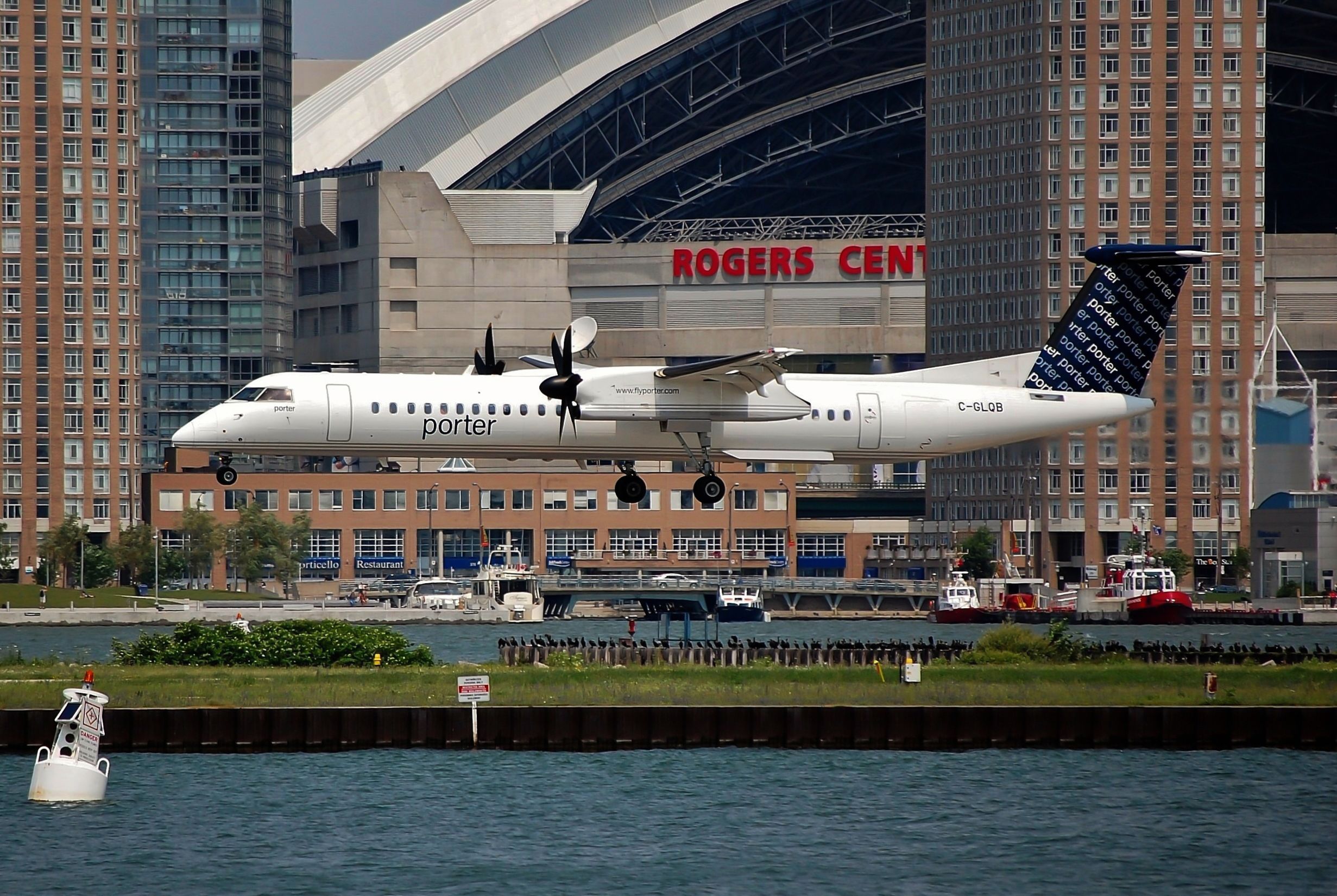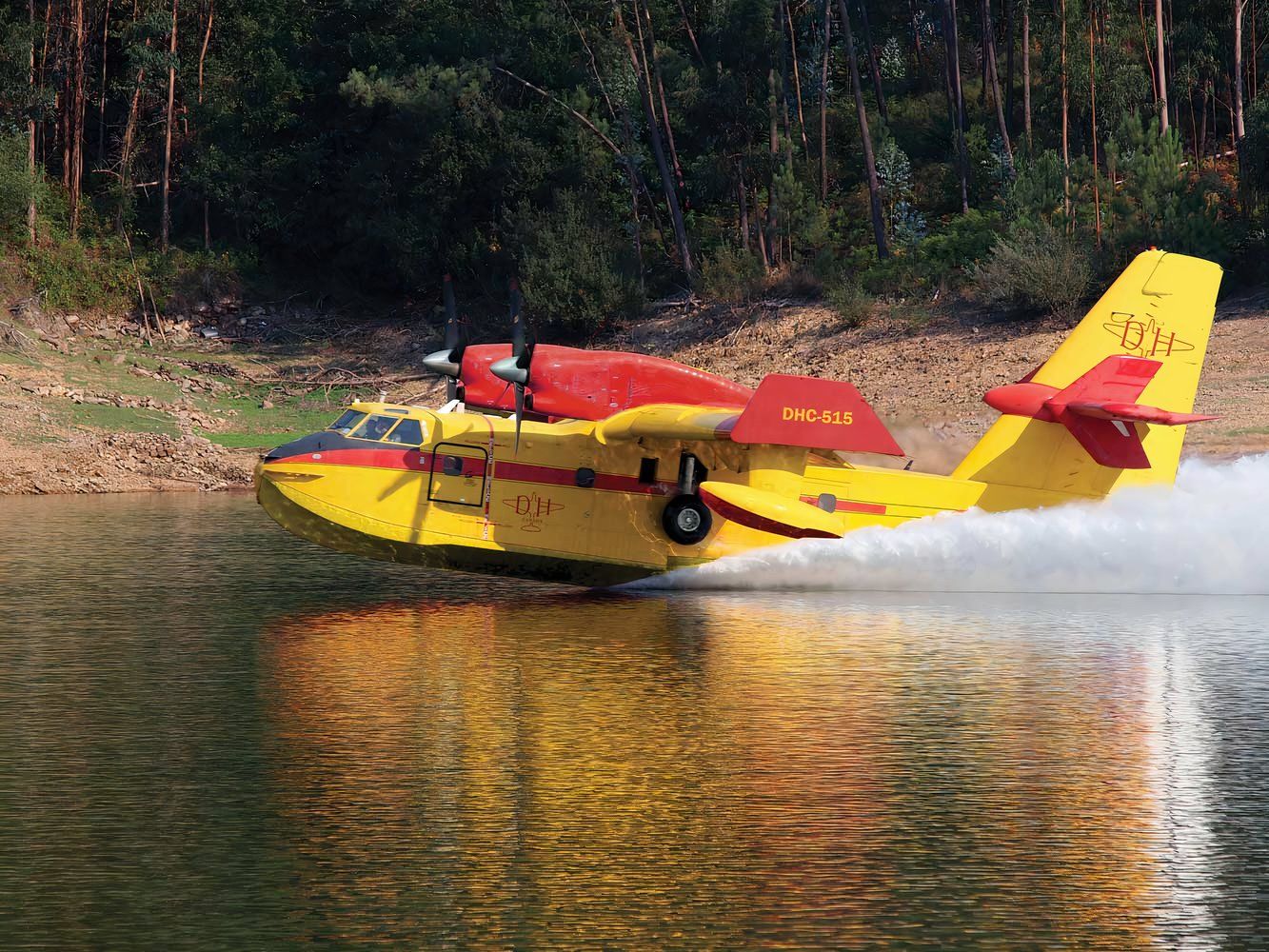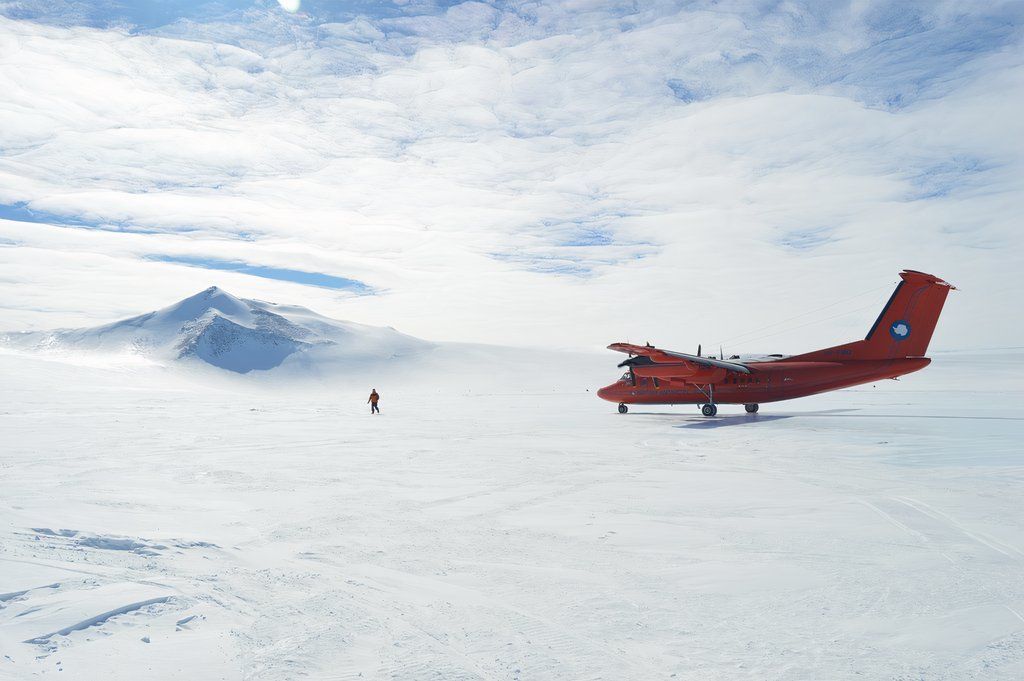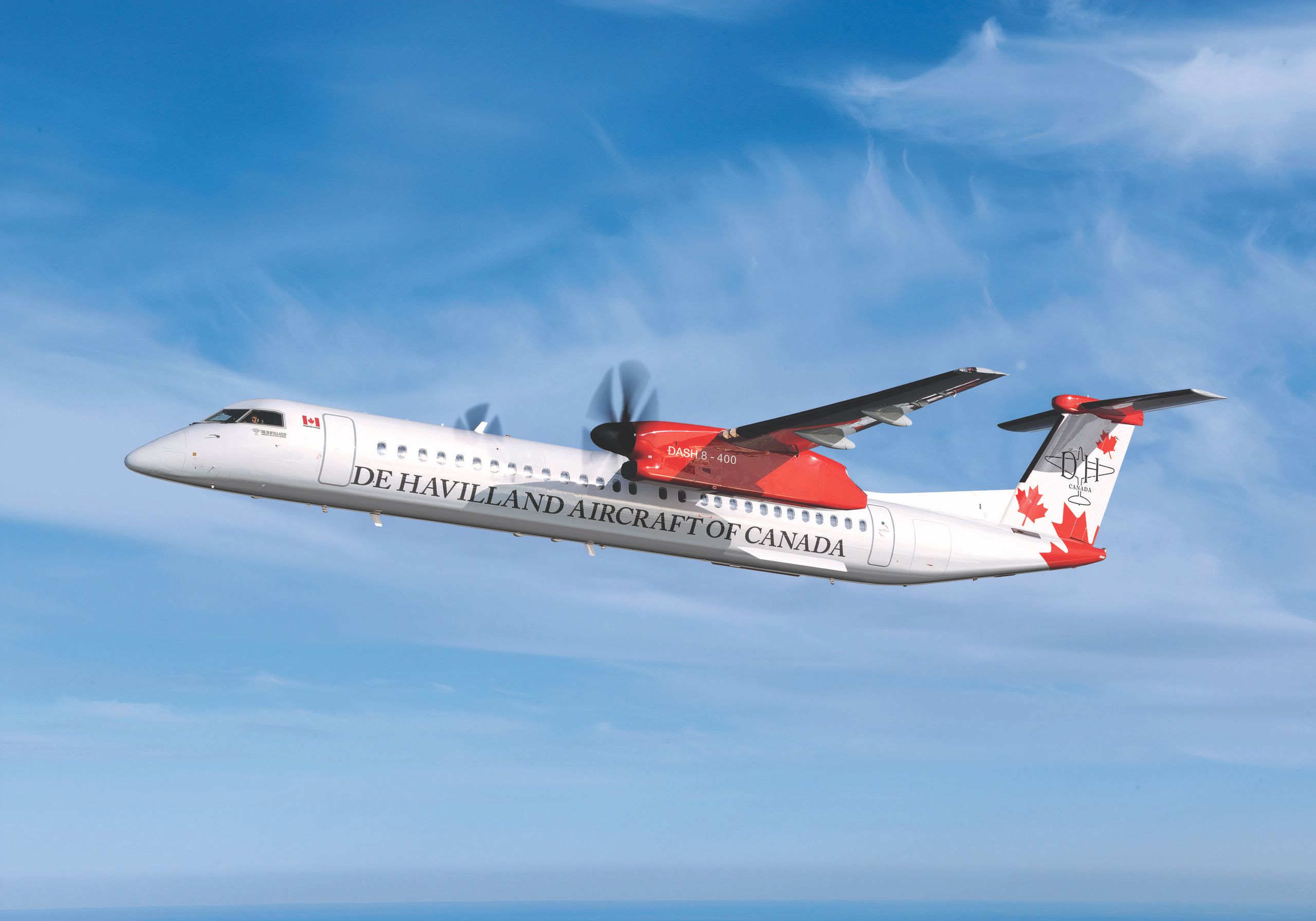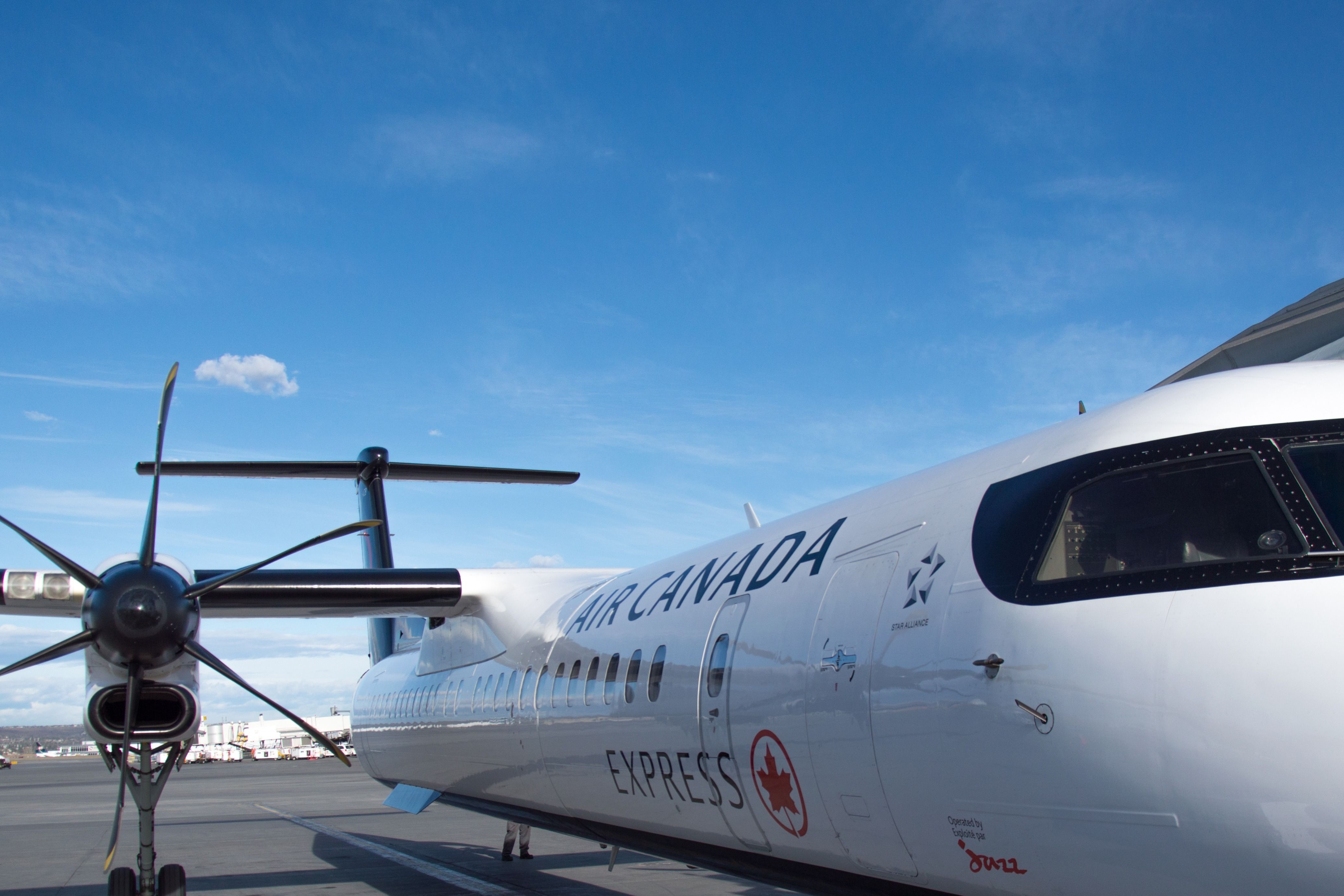De Havilland Aircraft of Canada, headquartered in Calgary, Alberta, was founded in 1928 by the British de Havilland Aircraft Company to manufacture military aircraft. It continues to produce aircraft that perform essential tasks worldwide. After WWII, DHC developed unique designs for the Canadian operating environment.
Canada privatized DHC and sold it to ![]() Boeing
Boeing
in 1986, which discontinued the Otter and Dash 7. After twelve years, DHC was acquired by Montreal-based Bombardier
Aerospace. Viking Air purchased the type certificates for all original de Havilland designs in 2006.
DHC is a turboprop specialized aircraft manufacturer. The company is famous for its robust designs that match harsh weather conditions and essential air transport in rural areas. These aircraft have multiple applications, such as rescuing or firefighting; they can be helpful in evacuation and surveillance missions. It has a rich aircraft history, like the Beaver and the Buffalo.
On August 1, 2024, a group of Canadian aviation corporations, including De Havilland Aircraft of Canada Limited, De Havilland Flight Operations Limited,
Viking Air
Limited, Longview Aviation Services Inc., and Longview Distribution Services Limited, amalgamated with Longview Aviation Capital Corp, forming De Havilland Aircraft of Canada Limited, the new entity.
Photo: NYC Russ | Shutterstock | Simple Flying
Simple Flying picked four key DHC aircraft types built after the Second World War for general aviation purposes.
1
DHC-6 Twin Otter
DHC restarted production of the 300 series (Short Takeoff and Landing) STOL utility aircraft in 2023
It is a twin Pratt & Whitney
Canada PT6A-20 engine turboprop that accommodates up to 20 passengers with their additional cargo. The design features multiple versions. However, only series 400 and series 300 are under production. The newest Twin Otter underwent major changes, including advanced avionics systems, deletion of the AC electrical system, and modernization of electrical and lighting systems.
The Twin Otter has been popular with bush operators and civil and military customers, and many commuter airlines in the United States started by flying it on scheduled passenger operations. In 2020, there were 315 Twin Otter aircraft worldwide, with 220 in service, 95 in storage, and eight on order.
|
Dimension |
Specification |
|---|---|
|
Wingspan |
65 ft (19.81 m) |
|
Length |
51 ft 9 in (15.77 m) |
|
Height |
19 ft 6 in / 5.94 m |
The Twin Otter Classic 300-G is a modern, efficient, cost-effective air transport aircraft with enhanced operational flexibility and higher revenue generation. It features a Garmin
G1000® NXi Flight Deck, a fully integrated avionics suite, and a 400-500 lb essential weight reduction, resulting in more payload and longer range capability.
|
Feature |
Specification |
|---|---|
|
Maximum Range |
871 NM (1002 mi, 1,613 km) |
|
Maximum Cruise Speed |
182 Knots (209 MPH, 337 km/h) |
|
Take-Off Distance |
1,200 ft (366 m) |
|
Maximum Take-Off Weight |
12,500 lb (5,670 kg) |
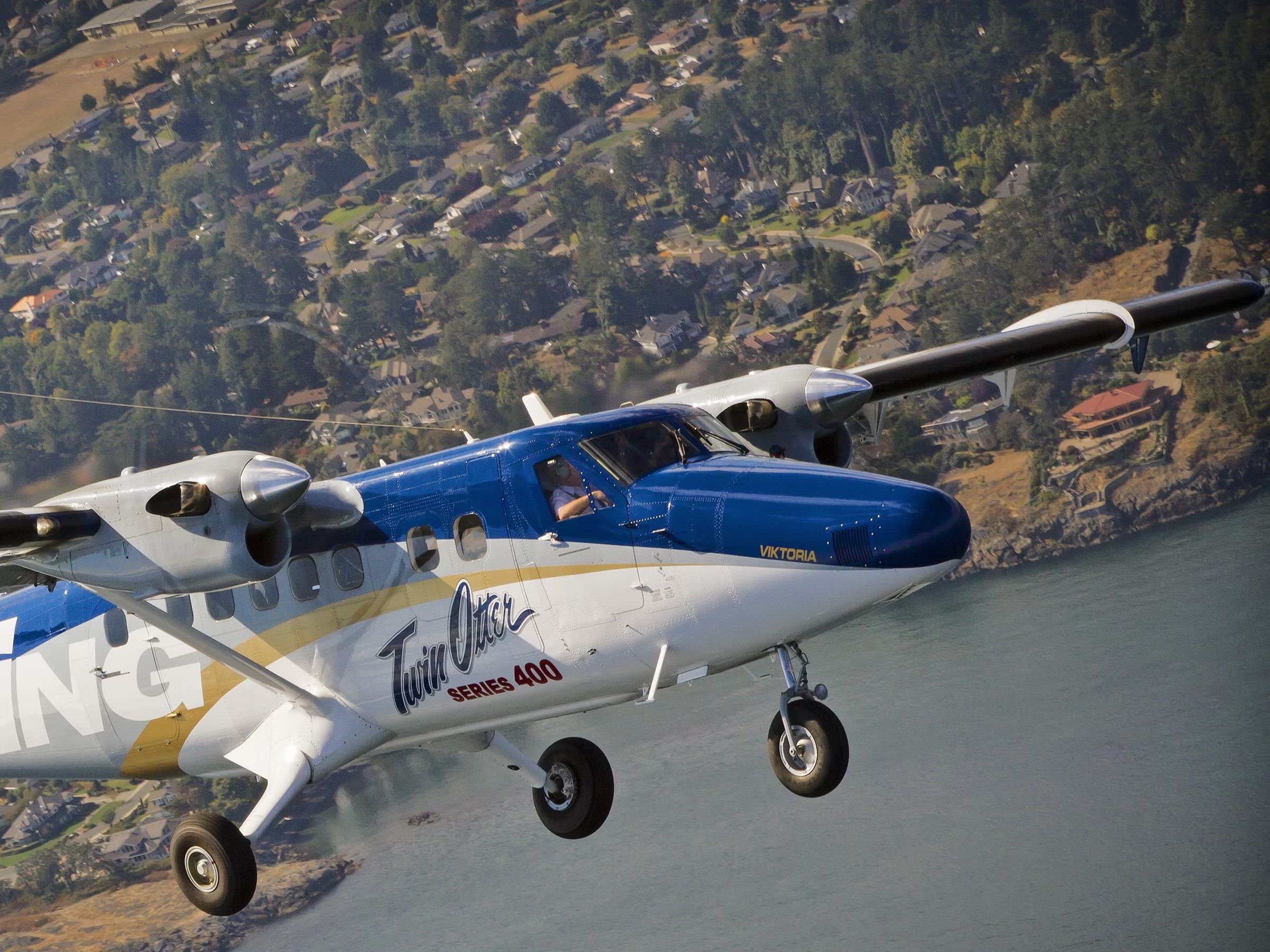
The Differences Between De Havilland’s DHC-6 ‘Twin Otter’ Variants
The original Twin Otter only had three variants, but a fourth was made by another manufacturer.
2
Canadair 515
The DHC-515 Firefighter changed to reflect the history and sentiment of the name “Canadair”
The Canadair 515 is a new production amphibious firefighting aircraft. It offers corrosion protection and an advanced avionics suite for improved safety and situational awareness. The aircraft offers exceptional take-off and landing performance, access to remote wildfire locations, superior maneuverability, and large wing and flight surfaces.
Photo: DHC | dehavilland.com
|
Feature |
Specification |
|---|---|
|
Maximum Takeoff Weight |
43,850 lb (19,890 kg) |
|
Maximum Takeoff Weight from Water |
37,850 lbs (17,170 kg) |
|
Maximum Cruise Speed |
187 NM (215 MPH, 346 km/h) |
The European Union’s coalition of nations, which has declared its desire to buy 22 aircraft first and serve as the program’s launch customers, includes Canada Commercial Corporation, which has secured contracts for 11 aircraft with Greece, Croatia, and Portugal in 2024.
“Launched the De Havilland DHC-515 Firefighter program, which will involve negotiating contracts with our European customers and ramping up for production,” Brian Chafe, Chief Executive Officer of DHC at Canadian Manufacturing
The firefighting aircraft encompass two firefighting tank capacity:
- Water Tank Capacity:1,621 gallons (6,137 liters)
- Foam Tank Capacity:180 gallons (680 liters)
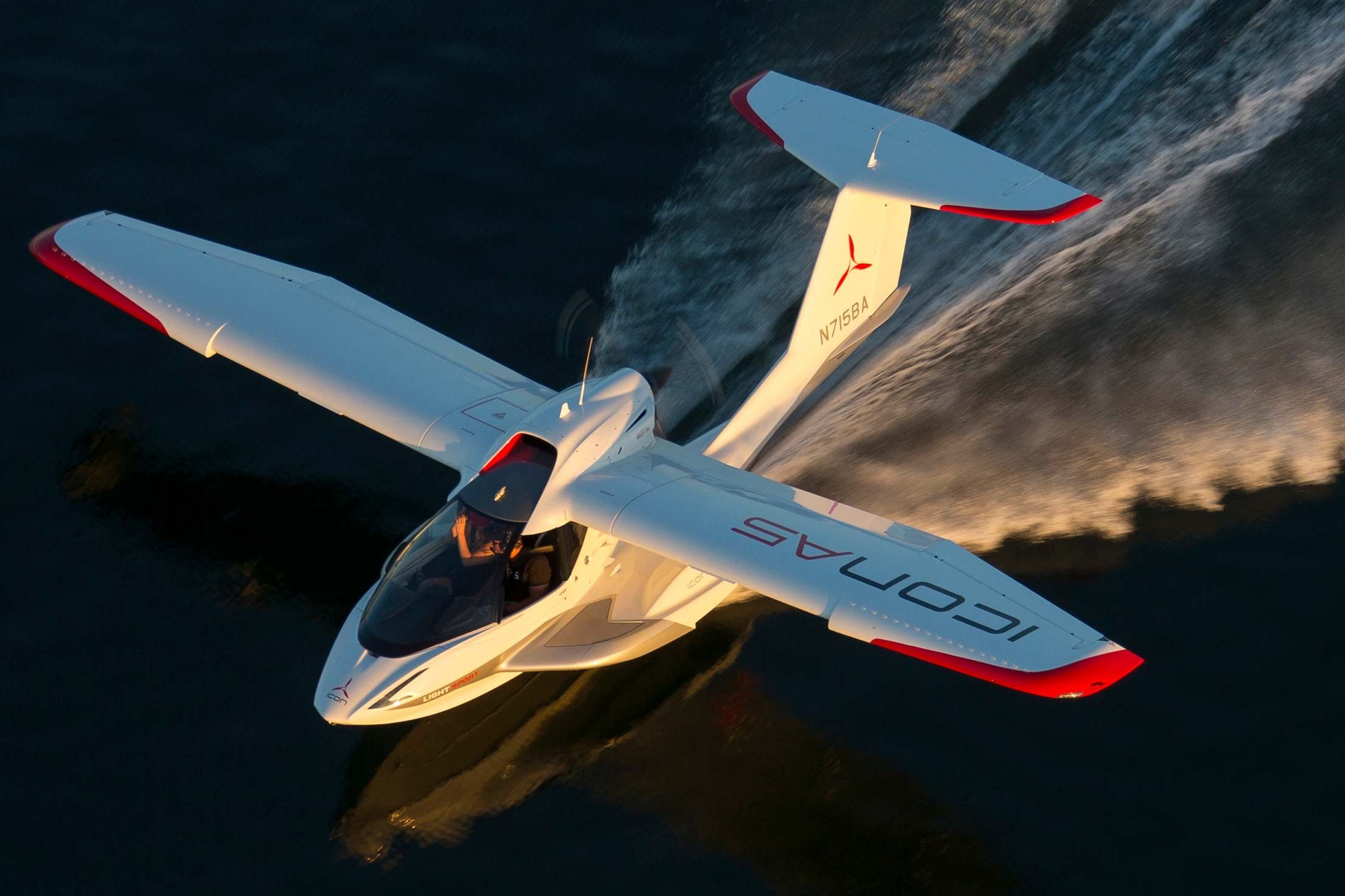
This Single Pilot Amphibious Aircraft Just Got Certified By The FAA
Attaining FAA primary category certification will open a window to the global market.
3
DHC-7 “Dash 7”
There are currently 19 Dash 7 aircraft in service
The DHC-7 was a larger, four Pratt & Whitney PT6A-50-engined regional airliner designed for commercial and military use. It was first flown in 1975. Between 1978 and 1988, DHC delivered 113 aircraft. The Dash 7 was a reliable, efficient, and pressurized aircraft that made its first flight to Antarctica in 1994.
The DHC-7 also travels to and from the ice runway at the Sky Blu Logistics Facility on the Antarctic continent.
It can transport up to 50 passengers on short-haul routes. The British Antarctic Survey Council utilized the version with long-range fuel tanks, a large cargo door, and enhanced avionics and navigation systems. The aircraft seats 12–16 people and is chosen for its rugged design, fuel efficiency, and short take-off and landing capabilities.
|
Dimension |
Specification |
|---|---|
|
Wingspan |
93 ft (28.35 m) |
|
Length |
80 ft 7.75 in (24.58 m) |
|
Height |
26 ft 2 in (7.98 m) |
Hawaiian Airlines operated the aircraft on the 3000-foot runway at Kapalua Airport. The aircraft gained military orders, with the Canadian Armed Forces using two aircraft to transport high-ranking passengers and freight around Europe. The United States Army has used several Dash 7 as surveillance platforms. The design of a more “conventional” twin-engine design led to the Dash 8.
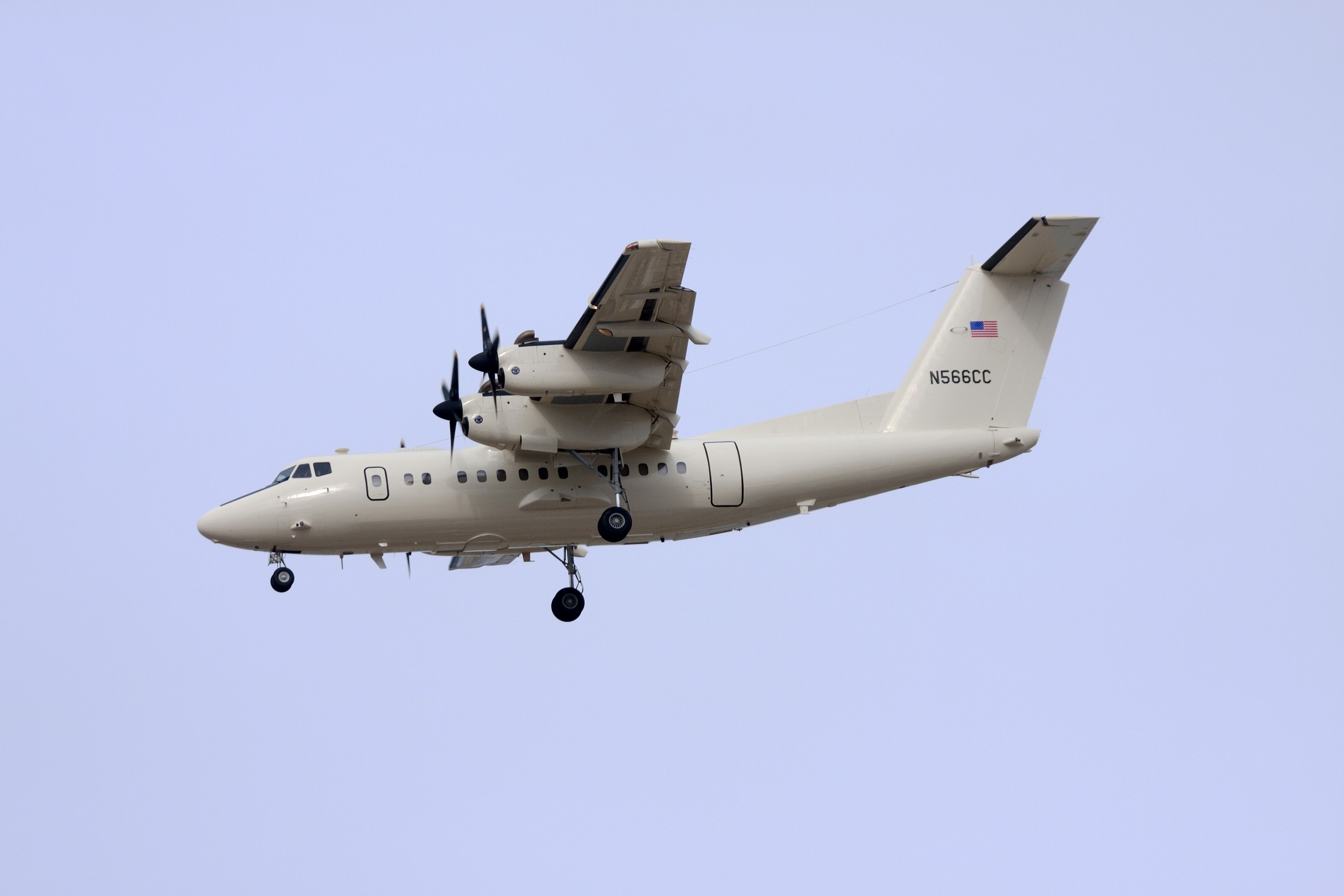
Four-Engine Turboprop: Who Flies The De Havilland Dash 7 In 2024?
In 2024, there are just 11 active aircraft.
4
DHC-8 Dash 8
The design boasts a wide T-tail and a high aspect ratio wing
The Dash 8-400, a turboprop aircraft, has been significantly improved. It has new engines, a modernized cockpit, and better aerodynamics. It has a maximum capacity of 90 passengers and is the market’s largest turboprop. Its cruise speed is 360 knots (414 MPH, 666.7 km/h), and its maximum operating altitude is 25,000 ft (7620 meters).
Photo: DHC | dehavilland.com
The Series 400 aircraft is powered by two Pratt & Whitney Canada PW150A engines. It can also function as a freighter, firefighting, and mission-specific aircraft. Due to its superior performance, it can operate in difficult conditions such as unpaved runways and remote communities.
Since its introduction, over 620 Dash 8-400 aircraft have joined the fleets of more than 70 operators worldwide. However, in July 2018, 844 Dash 8s, including all variants, were in service, with 56 orders in backlog. The aircraft logged seven million flight hours with 60 operators.
Photo: Randy Blackwell | Shutterstock | Simple Flying
In December 2021, ZeroAvia and De Havilland Canada signed a Memorandum of Understanding developing a hydrogen-electric line-fit and retrofit program for their aircraft models. The program will target the Dash 8-400 type certificate, a reliable turboprop aircraft, reaching the zero-emission civil aviation targets.
|
Performance |
Specification |
|---|---|
|
Engine |
PW150A |
|
Propellers |
Dowty R408 |
|
Maximum Cruise Speed |
360 knots (414 MPH, 667 km/h) |
|
Maximum Take-Off Weight |
67,200 lb (30,481 kg) |
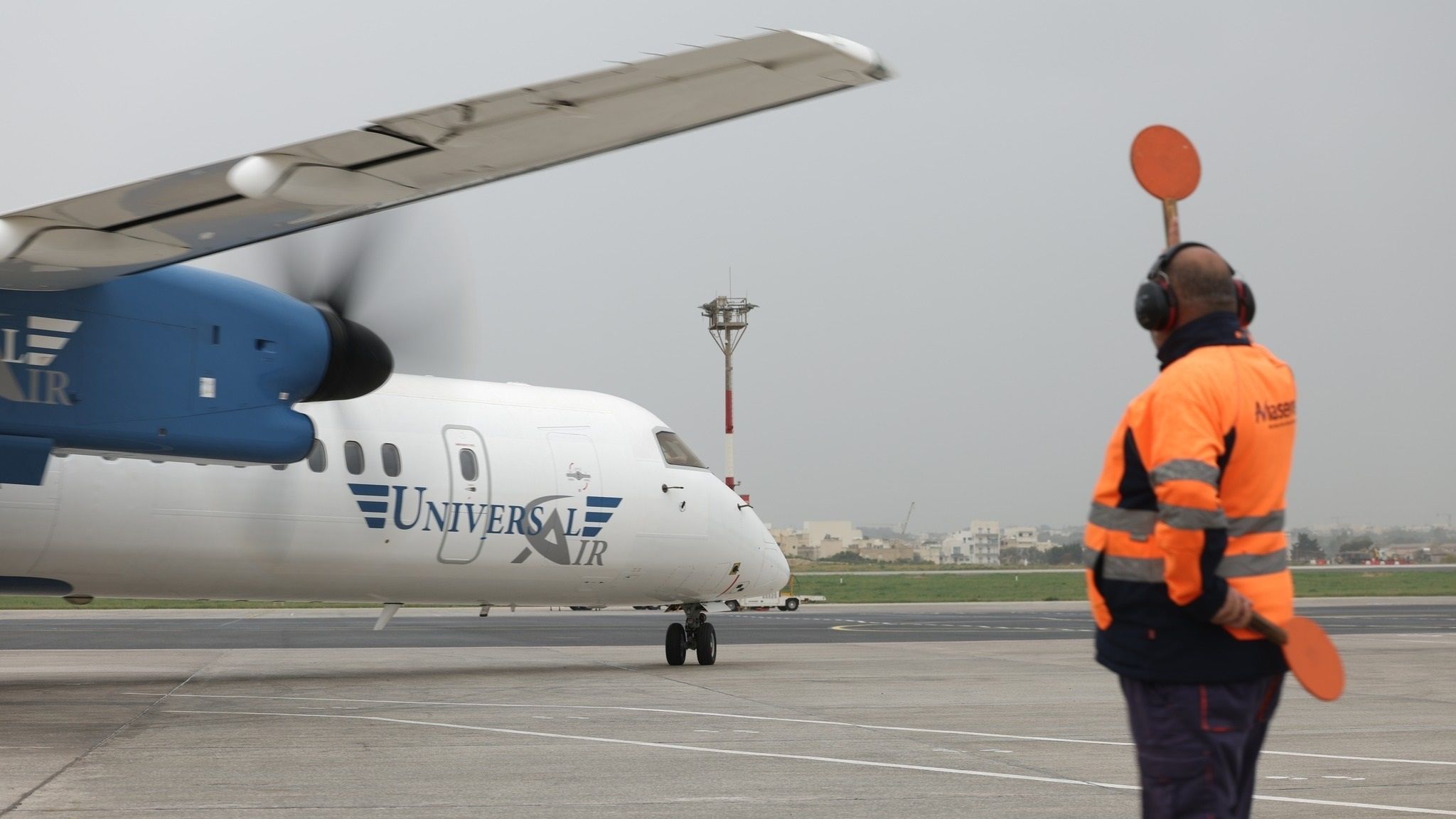
3h 45m: The World’s New Very Long Dash 8 Q400 Service This Summer
Do you fancy being on it? It arrives at 01:30!
Additionally, DHC designed its own aircraft, such as the DHC-1 Chipmunk, DHC-3 Otter, DHC-4 Caribou, and DHC-5
Buffalo
. The Chipmunk, a primary trainer designed to replace the Tiger Moth, was built in Canada and the United Kingdom. The Beaver was designed for bush flying and used by the US Air Force and the US Army.
The DHC-3 Otter was a larger and heavier aircraft that found a significant role as a STOL bush plane. The DHC-4 Caribou was a rugged STOL designed for military transport, while the DHC-5 Buffalo was a larger DHC-4 with turboprop engines and a T-tail. The Buffalo made its first flight in 1964 but was later transferred to the
US Air Force.

